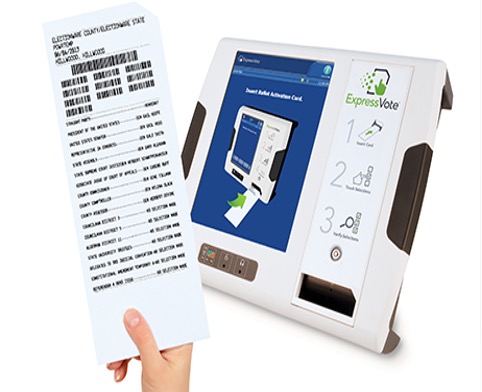Third in a series of election integrity tips to help improve the safety/security of elections in Williamson County.
The scanner/tabulator is the machine in the voting process that intakes your ballot, scans it for your choices and tabulates your selections as well as the selections of other voters from your voting center.


Your vote choices – which are printed in text on the lower half of the ballot — are also translated into a bar code and it’s that bar code – not the printed names — that the scanner/tabulator actually reads for your vote.
On the ballot, you’ll see one long bar code at top that is the ballot style. Then each race in which you vote will have its own bar code. Vote in six races? You’ll see six bar codes at the top.
Closely check your ballot when the ballot marking device expels it back to you. Make sure the ballot contains no other marks on it other than the printed county and race information and the bar codes. It should be blank aside from the voting information. If there is an extraneous mark, show it and the ballot to the poll worker to be sure it won’t affect your vote.
Now bring it to the scanner/tabulator. But before you insert it to be counted, check out the scanner screen for three things:


The time of day: The date is not shown on the screen but the time of day is… right above the “Insert here” words. This screen says 8:55 a.m., when the photo was taken. Make sure the time on your screen is close to the actual time when you’re voting. If it’s not, tell the scanner poll worker. Is the machine acting up since the time-of-day counter is not what it should be?
The public count: Which should be right below the words “Williamson County” and the date of the election. The public count is the number of ballots that have been scanned on that machine for this election. This machine’s public count when the photo was taken is 1. Make sure after you vote that the number has increased by one. If so, your vote has been counted. If not, tell the technician.
The protective count: Which is right under the public count number. The protective count is the cumulative number of ballots that have ever been counted on the machine. Every new election on the machine will have a higher and higher protective count. The protective count of this machine when the photo was taken is 195… a relatively new machine. Again, make sure after you vote that the number has increased by one.
Yes, it’s a little bit of extra work to be sure the voting process works correctly, but voters now need to be paying a lot closer attention to the process. To ensure it goes well and that your vote counts.
Frank Limpus
Tennessee Voters for Election Integrity
Aligned with Williamson Families, Tennessee Voters for Election Integrity shares with state legislators, election commissions and government officials opportunities that the group has uncovered in their research to plug holes in the county’s and state’s election systems. And for these leaders to make — and lead — necessary changes in machinery and methods that will strengthen Tennessee’s leadership in election integrity while improving citizen trust and support of our election processes.


